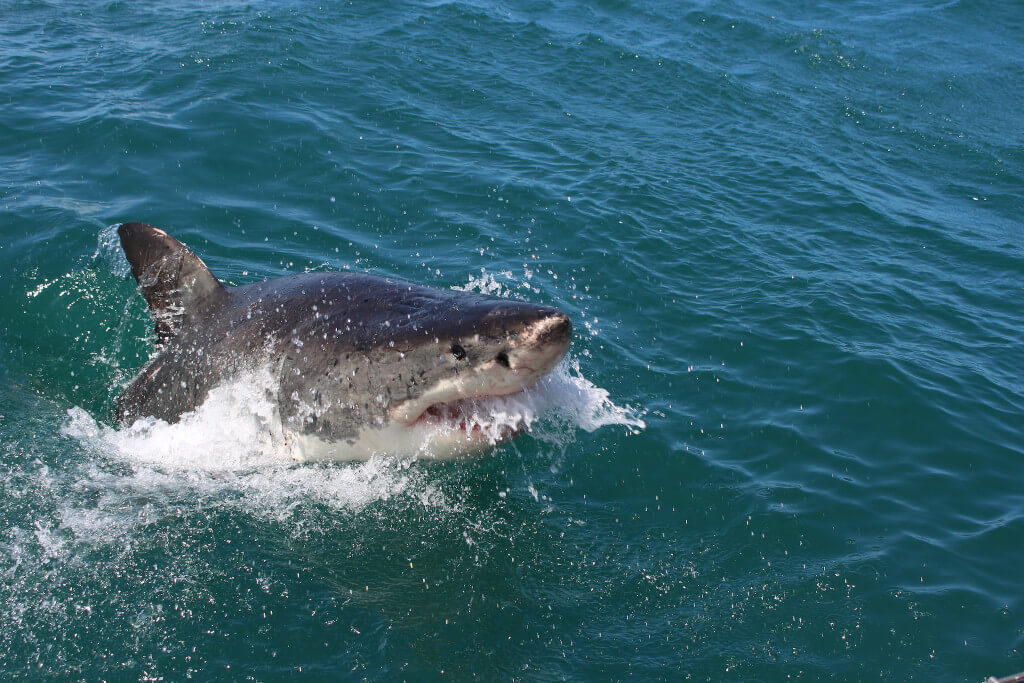Off the coast of South Africa, there are a lot of great white sharks (Carcharodon carcharias). But there have been big drops in shark numbers in places where they usually gather along the coast of Western Cape province. Sharks meet in these places for one of three reasons: to eat, to socialise, or to rest.
In 2011, “shark spotters” in Cape Town logged more than 300 sightings of great white sharks on eight beaches. Concerns have been raised about the general state of conservation of the species because of these drops. Great white sharks need to be protected so that they can keep living in aquatic settings.
As the most powerful hunters, they are very important to marine food chains because they keep things in balance. Their presence changes the habits of other marine life, which throws off the balance of the marine ecosystem.
We marine scientists wanted to know if the falling number of sharks in the Western Cape was a sign of a larger change in the shark population in South Africa or if the sharks had just moved.
As part of our study, we got information from academics, people who run tours, and people who fish from the shore. We looked at how the number of sharks and where they lived in South Africa changed over time. According to what we found, the amount of food at popular meeting places varied a lot. Some places saw declines, while others grew or stayed the same. Overall, it looks like there is a trend. Since they were made a protected species in 1991, it doesn’t look like the number of white sharks has changed.
We found that the number of shark-human encounters changed from the Western Cape to the Eastern Cape. This could mean that sharks are moving around differently. More research needs to be done to figure out if the sharks seen in the Eastern Cape are the same ones that went missing in the Western Cape.
Even though the number of white sharks has stayed the same, which is good news, their new home has brought new dangers, like the risk of fishing and the need to take care of beaches.
So, it’s important to learn how to find sharks better.
What Makes Sharks Move?
Most of the big changes happened between 2015 and 2020. For example, the number of shark reports per hour at Seal Island in False Bay (Western Cape) dropped from 2.5 to 0.6 between 2005 and 2017. In 2013, people fishing from the beach in Algoa Bay, which is to the east, only caught six sharks. By the year 2019, this amount has gone up to 59. The changes at each place, on the other hand, are complicated. It’s still hard to figure out what’s going on.
About 70 years is the average age at which these animals die. Juveniles, especially males, stay close to shore. Young adults and adults, especially females, go farther out to sea. Their migration habits are affected by the temperature of the water, the phase of the moon, the season, and the amount of food that is available.
Long-term Changes in the Climate and Oceans May Also Play a Part
They are hunters who can live in a wide range of temperatures (14-24 degrees Celsius is best) and eat many different things. They can get used to places that aren’t good for them by moving to places that are.
Sharks Are What Killer Whales Eat
Killer whales that are trained to eat shark livers make the movement even more complicated. In the past few years, these top hunters have killed white Whaler sharks, seven-gill sharks, and bronze Whaler sharks.
Around the same time that the first cases were reported in 2015, white sharks in Gansbaai and False Bay began to act strangely. Observations and tracking data support the idea that white sharks have a unique flight reaction after being eaten, even though a direct cause-and-effect link has not been shown.
Not too long ago, a group of killer whales killed at least three white sharks in Mossel Bay. It was clear that the other sharks left the area after that.
Sharks, Saving the Environment, and Staying Alive
Great white sharks are dangerous in many different ways. Research from 2022 shows that 25% of South Africa’s Exclusive Economic Zone is home to both white sharks and fishing with longlines and gillnets. About 15% of the sharks’ lives were spent near these farms.
About 32 white sharks are caught every year in KwaZulu-Natal, according to reports. Because of this, it is important to look at the dangers to shark populations by putting together information about how sharks move and how many are caught. As shark migration trends change and move towards the east, there may be more danger. If white sharks, shark nets, drumlines (hooks with food on them), and gillnets are all closer to each other, it may be easier to catch fish.
Protecting Beachgoers and Making Changes to How Beaches Are Run
Even though shark attacks are rare, the way sharks act can change, which could make beaches less safe. Sharks can change how people act, especially in places where people swim and do water sports. As shark populations move around, it may be necessary to change the way sharks are managed now.
Possible answers include putting up more and better shark signs, closing beaches seasonally, and teaching people more about how sharks act. In Cape Town, for example, people who look for sharks have moved their attention to different beaches. When two people were killed by sharks in Plettenberg Bay in 2022, the scheme was expanded there. Word on the street is that white sharks have been seen more in a few other places in the Eastern Cape.
Better Tracking of Projects That Are Still Going on
More research is needed to find out what makes sharks move and how those things affect shark numbers over time and in different places. Our study shows that data collection methods need to be standardised so that accurate estimates of abundance can be made across a wide range. We also think that long-term tracking projects around the Eastern Cape could help reduce the number of deaths caused by sharks.




